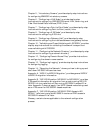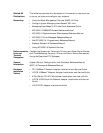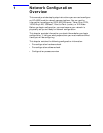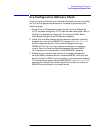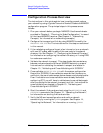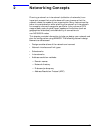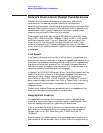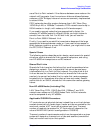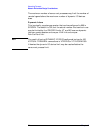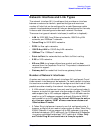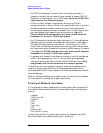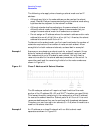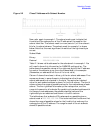
22 Chapter2
Networking Concepts
Network Environment Design Considerations
Network Environment Design Considerations
Network and internetwork design must take many factors into
consideration: the desired physical location of the computers
comprising the network, the volume of projected communications traffic
between nodes, communications traffic patterns, and the possibility of
connections to other types of nodes (such as those in a public data
network) are just some of the criteria to consider.
These factors will affect your choice of NS network type (LAN, Token
Ring, FDDI, 100VG-AnyLAN, 100Base-T, Point-to-Point, X.25) as well
as choice of specific links. They will also affect how you design your
network layout. You may want to create subnetworks within your
network by configuring IP subnet addresses. You may, on the other
hand, need to join several networks together to form an internetwork
or internet.
Line Speed
Line Speed is a measure of the rate at which data is transmitted by a
physical link (usually measured in kilobits or megabits per second). The
maximum line speed varies among different NS links. Line speed may
therefore influence your choice of link. Although line speed does not
indicate the exact throughput of a particular link, it can be used on a
comparative basis to indicate relative throughput.
In general, an IEEE 802.3/Ethernet LAN or Token Ring network will be
faster than a Point-to-Point or X.25 network because the bus or ring
topology provides a faster routing mechanism than a series of
Point-to-Point hops. FDDI, 100VG-AnyLAN, and 100Base-T links will
be an order of magnitude faster than LAN or Token Ring. Links using
leased lines will have a higher line speed than links using normal
telephone lines.
Consult your Hewlett-Packard representative for line speeds and the
most up-to-date performance data for various links.
Geographical Location
The geographical location of the computers that will be part of your
network or internet will be an important factor in deciding both the
physical topology and the link types that you should use.
If all of the nodes you want to connect are located relatively close to
each other (in the same building, for example) you might choose to
connect them via a LAN, Token Ring link, 100VG-AnyLAN, or
100Base-T.
Another option for nodes located in the same geographic location is to
use hardwired (direct-connect) Point-to-Point links. You might wish to



